By Gouri Satya, Sr. Journalist
While writing about the streets and Keris of Mysuru, perhaps I should also highlight landmarks Mysuru has in memory of the Dewans who served the then Mysore State. Dewan is an Urdu word meaning the Prime Minister of a kingdom, more precisely an ‘Advisor’ to the monarch.
As we are aware, the Kingdom of Mysore was established in 1399 with Yaduraya becoming the first ruler of the Yadu dynasty. During their regime, we see Dalvoys from 1732 onwards emerging as powerful administrators. Taking advantage of the situation, Hyder Ali Khan became a powerful administrator by 1761. He brought an end to the powerful hold of the Dalvoys as he himself became a de facto ruler. He appointed Purnaiah as the Dewan or the Prime Minister to assist him in administration. Purnaiah became the first Dewan of the Mysore Kingdom.
An able statesman and administrator, Purnaiah had the unique distinction of serving three rulers — Hyder Ali Khan and his son Tipu Sultan from 1782 to 1799, and subsequently Maharaja Krishnaraja Wadiyar III from 1799 to 1811 — in all a period of about three decades.
Between 1782 and1949, spanning over a period of a century and a half, Mysore Kingdom saw as many as 14 prominent Dewans. In 1949, the role of Dewans came to an end. During this period of a century and a half, Mysore Kingdom was headed by five rulers — Chamaraja Wadiyar
IX (1782-1799), Krishnaraja Wadiyar III (1799-1881), Chamaraja Wadiyar X (1881-1894), Krishnaraja Wadiyar IV (1894-1940) and Jayachamaraja Wadiyar (1940-1949). The post of Dewan was abolished in 1949 when Maharaja Jayachamaraja Wadiyar accepted the Constitution of India to become a part of the Republic of India.
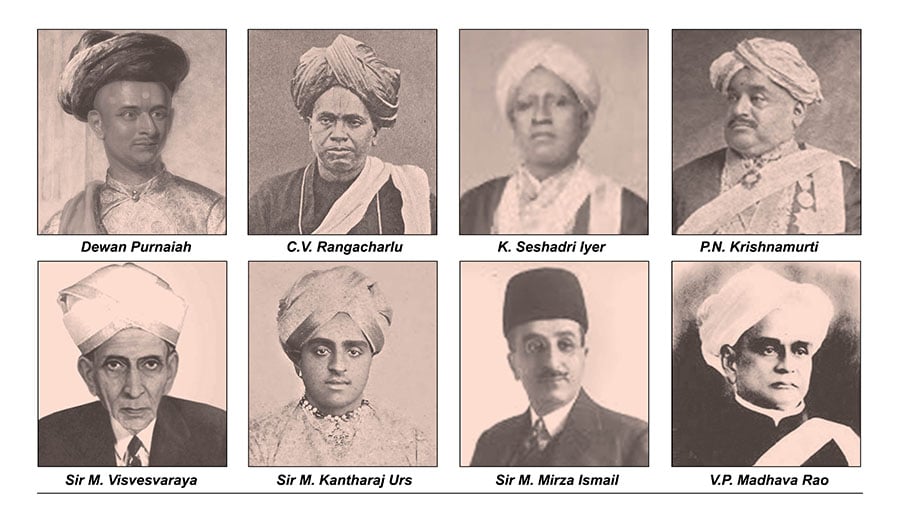
Mysuru City has about eight landmarks of the Dewans out of 14 of them. These landmarks relate to Dewan Purnaiah, C.V. Rangacharlu, K. Seshadri Iyer, P.N. Krishnamurti, Sir M. Visvesvaraya, Sir M. Kantharaj Urs, Sir M. Mirza Ismail and V.P. Madhava Rao.
The landmarks that relate to the eight Dewans are the Purnaiah Choultry, Rangacharlu Memorial Hall, Seshadri Iyer Road, popularly called the Dewan’s Road, Krishnamurti Bungalow, Visvesvaraya Circle, Kantharaj Urs Road, Mirza Road and N. Madhava Rao Circle.
But deplorably most of these historic and heritage places are neglected and the contributions made by these visionary Dewans, under the able stewardship of the rulers, for the growth and development of the city and the State of Mysore have been ignored. If at all the city claims to be a Heritage City today, we must remember, it is because of these administrators who strove to make Mysore modern and beautiful.
- Purnaiah Choultry
There was an old Choultry bearing his name in Agrahara. One of the prominent choultries, it provided accommodation to those who visited the city and students studying in the Maharaja’s Sanskrit College during its hey days. However, subsequently it remained unused and when the plan to link Vani Vilasa Road with the Race Course Road was drawn up, the heritage structure was pulled down. A portion of the space occupied by the Choultry was handed over to a private institution for construction purposes. The rest was used for the straight road which we see today. A portion of the newly formed straight road is named as Mahatma Gandhi Road or M.G. Road.
A heritage structure, the Purnaiah Choultry had no significant architectural feature. However, it had a small shrine inside, like in many similar structures of those days. A priest performed worship daily. This shrine is still in existence in the middle of the Vani Vilasa Road. A few years after the formation of the new road, justice was done to the memory of the famous Dewan when a new choultry was constructed, though not in line with the earlier structure.
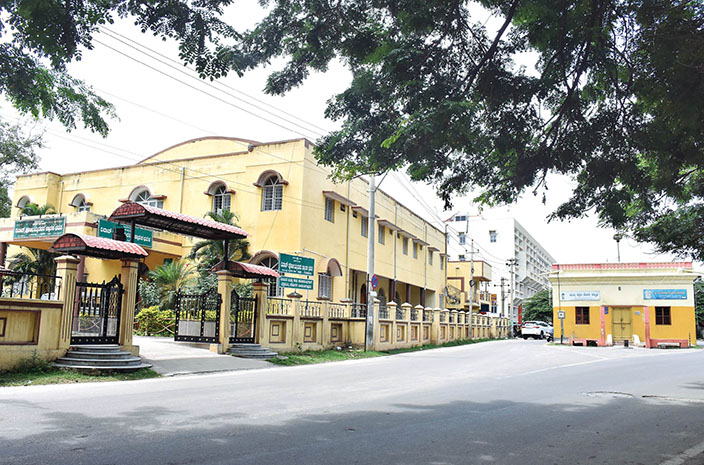
During his Dewanship from 1799 to 1811, Mysore saw rapid strides. Local rebellions were put down and peace was established throughout the length and breadth of the territories, the economy was stabilised, the finances were put on a firm footing and the administrative machinery was re-organised. Purnaiah’s great ability and administrative skill stands recognised with the reconstruction of the Choultry in his honour.
- Poorly cared Memorial Hall
The Town Hall is one among the major heritage structures in Mysuru. It occupies a prominent place, standing in the heart of the city. This famous building is named in honour of Rangacharlu, who was the Dewan during Chamaraja Wadiyar from March 1881 to January 1883. A century-old heritage structure, it was the centre of many significant historical events. But ugly structures have come up around the heritage building during the last few years shadowing its prominence and the beauty of its location. Added to this, it is also being neglected in upkeep.
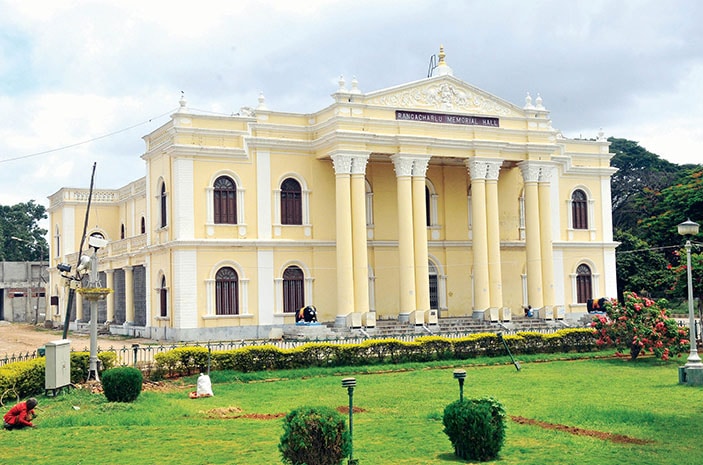
Popularly called the Town Hall, this building was constructed in 1884 to mark the memory of Rangacharlu, the first Dewan after restoration of monarchy in 1881. The credit for its construction in neoclassical architecture goes to his successor, Dewan K. Seshadri Iyer, who was the Dewan in 1884. The Town Hall was opened by Maharaja Chamaraja Wadiyar who also unveiled the portrait of the great Dewan.
This double-storied Victorian style Greeco-Roman building is built on a raised platform. It has a nice facade with Corinthian grand-columns, in four pairs supporting the heavy roof.
An ardent patriot, a great administrator and founder of the first representative institution in the country, the Representative Assembly, Dewan C.V. Rangacharlu occupies an abiding place in the history of the country.
- The longest serving Dewan
Sir K. Seshadri Iyer, who succeeded Rangacharlu, was the longest serving Dewan of the princely State of Mysore. He was Dewan from 1883 to 1900 and served under Chamaraja Wadiyar and Krishnaraja Wadiyar IV. Hailed as the builder of modern Bangalore, the contribution by this forgotten Dewan is immense.
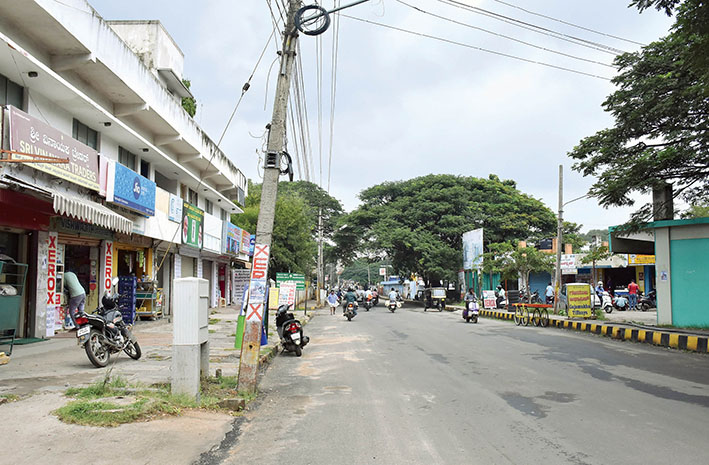
His notable achievement is the construction of a hydro-electric project at Sivasamudram in 1899, hailed as the first hydro-power project in south-east Asia, and supplying power to the Kolar Gold Fields, 147-kms away from the waterfalls. It was the longest power transmission line in the world. The Sivasamudram power project is named after him.
Seshadri Iyer Road, popularly called the Dewan’s Road, is a major historic road in Mysuru city passing through many major roads and linking the Sayyaji Rao Road in Bamboo Bazaar. His historic bungalow in the Dewan’s Road now houses the Commercial Taxes offices.
- A Puram for this Dewan
P.N. Krishnamurti is perhaps the only Dewan who has an extension named in his honour in Mysuru city. Krishnamurthypuram, on the southern area of the city, is named after him.
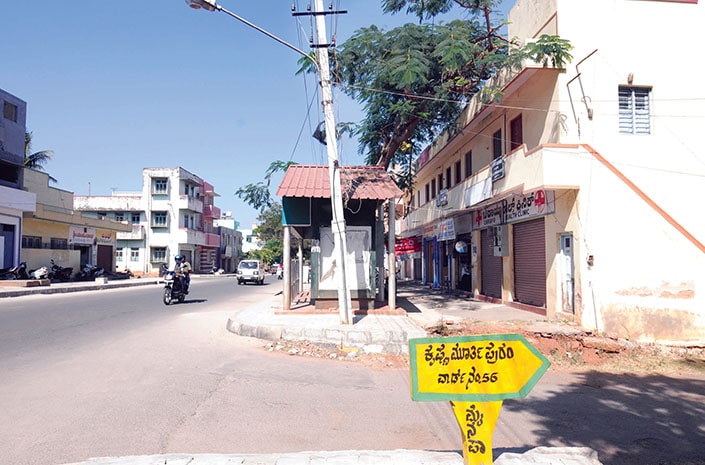
Purniah Narasinga Rao Krishnamurti, who was a direct descendent of the Dewan Purnaiah, the first Dewan of Mysore, was Dewan from 1901 to 1906, during Krishnaraja Wadiyar IV.
Apart from this extension, a bungalow in the Dewan’s Road stands obscured bearing the name Alamma Choultry. Belonging to the Kunchitigara Sangha, this bungalow has lost its historic significance. The bungalow housed Dewan Krishnamurti. While Krishnamurti was the Dewan, electric lighting was introduced in Bangalore. It was the first city in India to get electric street lighting.
- Legendary Engineer
Mysuru remembers a legendary engineer and statesman in having a Circle named after him. No one will forget the contribution of Sir M. Visvesvaraya as the Chief Engineer and Dewan of Mysore during the period of Krishnaraja Wadiyar IV.
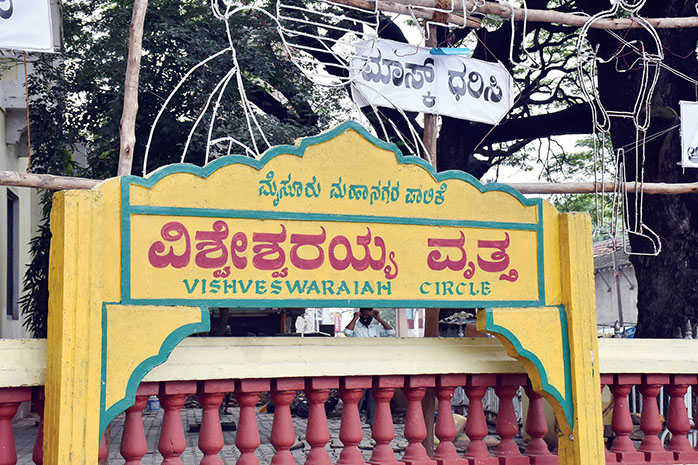
Among his significant contributions is the Krishnaraja Sagar (KRS) Dam across River Cauvery, which stands as a monument to the memory of this Bharat Ratna. Sir MV was the Dewan of Mysore from 1912 to 1918.
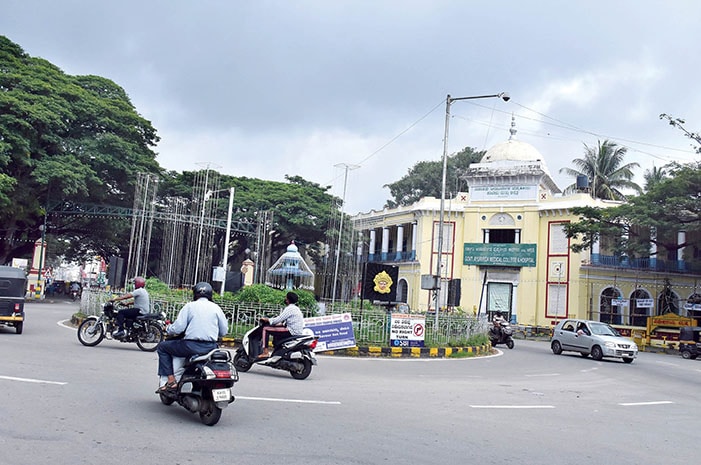
The Circle opposite the Government Ayurveda College and Hospital is named as Sir M. Visvesvaraya Circle. This Circle was earlier known as Ayurvedic College Circle and the name of this centenarian-engineer was given a few decades ago by the Mysore City Corporation (MCC). It had also resolved to erect a statue of Sir MV at the Circle, but the resolution has not seen the light of the day so far.
- A ‘new’ road for this Dewan
A first graduate of the Urs’ community, Sirdar M. Kantharaj Urs was the brother of Maharani Kempa Nanjammanni Avaru of Vani Vilasa Sannidhana. He married his niece Maharaja Kumari Jayalakshammanni Avaru, in whose name stands the splendid Jayalakshmi Vilas Mansion, in which the Mysore University has set up the Folklore Museum in Manasagangothri. The Jayalakshmi Vilas Palace was their residential Mansion. Sirdar Kantharaj Urs became the Dewan in 1918 and held the post till 1922 February during the regime of Krishnaraja Wadiyar IV.
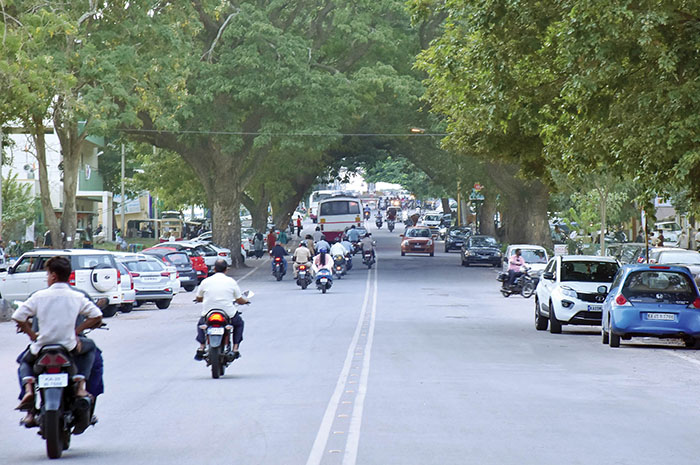
With the creation of Kuvempunagar, the extended Kantharaj Urs Road was named the New Kantharaj Urs Road, a few years ago.
- A road lost in charm
A stretch of about one kilometre between the Hardinge Circle, where stands the statue of the last Maharaja of Mysore, Jayachamaraja Wadiyar and the Police Commissioner’s Office Junction is known as ‘Mirza Road.’ It is named in honour of Dewan Sir Mirza Ismail.
Sir Mirza Ismail was the Dewan of Mysore from 1926 to 1940 during the reign of Maharaja Krishnaraja Wadiyar IV and subsequently till 1941 when Jayachamaraja Wadiyar succeeded to the throne. He succeeded Sir M. Visvesvaraya and carried forward further development of the princely State. He saw Mysore State made substantial progress in the field of industries, both in the private and public sectors, over his 14 years of service.
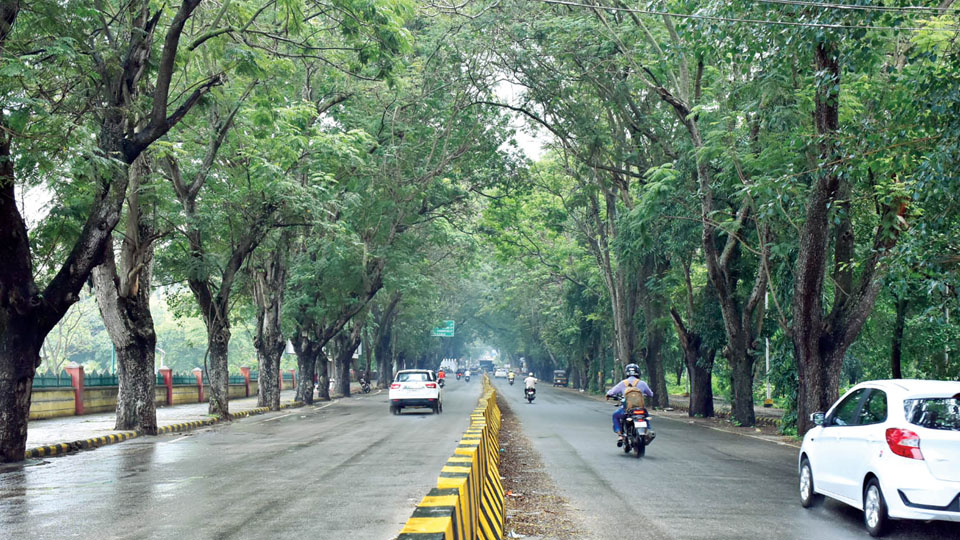
He was responsible for developing many parks and gardens, including the famous Brindavan Gardens, apart from the Nishad Bagh. Rightly the road cutting across Nishad Bagh was named after him. The park on the right side was also called Kuppanna Park. But, of recent this short stretch from Hardinge Circle to the Police Commissioner’s Office has lost its original charm of running between greenery. While the Kuppanna Park is neglected, the entrance to the Nishad Bagh has been moved to Lokranjan Mahal Road, thus taking away the significance of the Mirza Road.
- A Circle without Dewan’s name!
The busy Agrahara Circle, a hub of commercial activity, bore the honoured name of Dewan N. Madhava Rao. A well-designed name-board had been installed to honour the Dewan who served under Maharaja Jayachamaraja Wadiyar. Today, the Circle stands without a name, its board having disappeared.
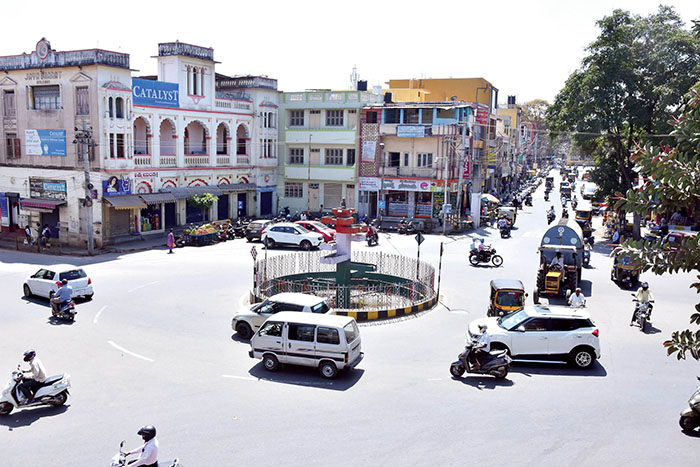
Sir Nyapathi Madhava Rao was the Dewan from 1941 to 1946 when Maharaja Jayachamaraja Wadiyar was the ruler. Succeeding Sir Mirza Ismail, Madhava Rao managed the severe food shortage the State faced during the Second World War. During his tenure, the Legislative Council and the Representative Assembly were combined to form a new Legislative Council. The first election to the reorganised Legislative Council was conducted in February 1941. After his retirement, Madhava Rao became a member of the Drafting Committee of the Constitution headed by Dr. B.R. Ambedkar and of the first Constituent Assembly of India. His son, N. Lakshman Rao, was the Commissioner of Mysore Municipality, and saw to the further development of Mysore city.
Mysuru should be proud of the services of these Dewans, for making the city a beautifully developed modern city, of which we boast. But, woefully, we have ignored their contribution to the city and the State and in the process ignored these heritage and historic places as well.



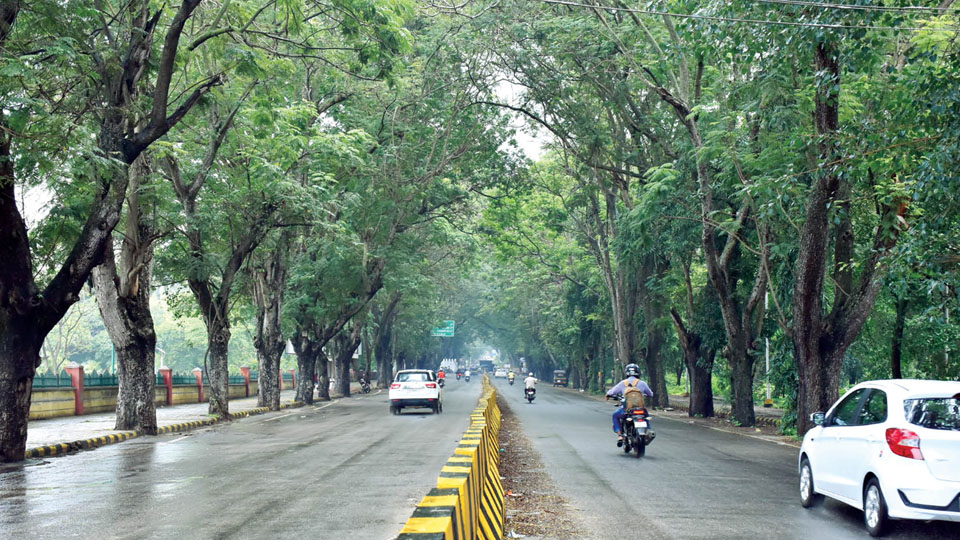




Dear Gowri Sathya
“it provided accommodation to those who visited the city and students studying in the Maharaja’s Sanskrit College during its hey days”
I have to correct you there. This Choultry was mainly meant to provide free lunch and dinner , for those who were lodging and studying in Maharaja’s Sanskrit College ( the Choultry began its existence to provide free lunch for visitors to Mysuru, and then was exclusively linked to Maharaja’s Sanskrit College students who were lodging in the College rooms, as their numbers grew larger and larger)’ which at the back of the main building had plenty of rooms to accommodate these students. Indeed, I got my private tuition for Hindi, from one of them: a North Indian student from Varanasi, who enrolled in the College to study advanced Shastra course. Such was the fame of this College in India and abroad. Students like him and others arrived from various parts of the country, On arrival, they reported to the warden of the College, who was in-charge of rooms allocation in the College: the warden was usually a senior professor. There were rooms for temporary accommodation for these students for a week, until they were allocated proper rooms. In the event this temporary accommodation was full, these students were taken in happily by professors in their homes, until their accommodation in the College was allocated.
During 1950s, at any time during the College admission sessions every year, our house took in 2 students at least for a week or 10 days , providing them lunch and dinner each day. They became part of our family, even after they finished their courses and left Mysuru.
The Choultry mainly provided free lunch and dinner for the above students, right from the time, they arrived in Mysuru. I had on various occasions, entered this Choultry, mainly as a guest of one of the students who lived with us, as explained above, and the Choultry had no rooms for accommodation at all, as students were all housed in the College premises as described above.
The Choultry had much more significance besides, providing free meals for the College students. The students who arrived from afar, were very studious, and completed their courses equivalent to degree courses in a college like Maharaja’s College ( which also sent visiting professors to teach Vedanta classes). The students who completed successfully their Veda courses, had their Graduation Ceremony at the College, where they received gold medals , wool shawls, and silk throws, thanks to the munificence of Wadiyars,later, joined their professors, to provide a pleasing recital of Vedas ( Ri, Yajus and Sama), fully adorned with medals, wool shawls and silk throws in front of invited guests, who numbered about 100. After these recitals, sweet snacks were distributed to all including the invited guests. I attended at least a few of these special occasions with my father as an invitee. I have visited European Monasteries and heard Gregorian chants by the monks there. These Vedic recitals were far far superior.
The Wadiyars, conscious of the fact that the above students needed good nourishment, allocated enough resources to provide good lunch and dinner. The Choultry celebrated important festivals , the small temple inside it had special poojas on those occasions, with Vedic recitals by the students above who were studying the 23 Veda courses ( Rig, Yajus, and Sama) in the presence of their professors.
This Choultry was an iconic institution, and in any other Western country, such institutions would have been preserved as heritage building. I have visited monasteries in Eurpe, which were equivalent to th above College and Choultry combined. In the same road, another iconic institution : Ane Karoti too was lost, surprising for a college construction. Indians , particularly Mysoreans who think Lansdowne building and Devaraja Market, really fail to understand what a heritage building is-this Choultry was one important icon.
The reason why the landmarks, their significance. an the Dewans linked to them are forgotten is because of those Mysoreans born and lived in Mysuru have long gone, and their children left to other parts of India, and many to the US, where they become new immigrants not bothering to know the landmarks and the significance of the area city where they live. For example, how many Indian techies in living in the bay area even attempted to know about the, landmarks. the architecture and the cultural diversity that made that region. The best they know is about the Golden Gate Bridge and the Silicon Valley of glass buildings and Dollars swirling around there! When I was living in US, I tried to impress upon those Mysoreans who arrived in the Mid-West about the Appalachian culture, and the artefacts, and they would not like to know. The same attitude is working in Mysuru now.
With regards to Sir K Seshadri Iyer ( and to some extent Sir MV), although he was a dewan to HH Wadiyar in that time, his residence was mainly in Bengaluru, which he developed from a mere large hamlet. His enduring memory is the area called Seshadripuram. Interesting that although Shivasamudram is nearer to Mysuru than Benagaluru, still the first stage of electric power distribution from the Shivasamudram hydroelectric station was to Benagaluru, which became the first city in Asia to have street lights. That shows the Dewans love for the city that was emerging. One might argue that , bringing electric power to Bengaluru, enabled it to be extended to Kolar Gold fields. Though a Dewan, he was not that well known in his time as for example Sir Mirza Ismail in his time, who tended to gravitate around Mysuru. As for Dewan Rangacharlu, his service s were more focused Mysuru Palace, and in the other districts, he was quintessentially , a Tamilian- in way not dissimilar to RK Narayan, spending his last days i the then Madras ( now Chennai). Sir MV was essentially a Bengalorean, but with vast interests in the modernisation of Mysuru state as a whole. His foresight is immortalised in the creation of the University of Mysuru, and ofcourse the KR Dam nearer Mysuru. He needed better recognition in Mysuru, rather than a simple circle.
The Dewans of 19th Century, tended to live in Bengaluru, with temporary residences in Mysuru. Their links to Mysuru at best was tenuous, except in the case of Sir MV and Mirza Ismail.
Just like the case of San Fransisco valley, the massive immigration to Mysuru from many parts of India, meant the dilution of the significance of the land marks, which in turn also meant that their continued maintenance getting lower priority.
The 2 main reasons why the contributions of Dewans and about Dewan;s themselves are now forgotten are: 1. there are is no longer an active Wadiyar ruler, with Royalty abolished after independence. All that remains is a pretend ruler with a titular title, and with an indirect line to the Wadiyar dynasty. even under the last proper Wadiyar Srikanta Datta 2. The massive influx of non-Kannada speaking outsiders-immigrants as articulated by a poster above, focusing mainly on their careers and living and not interested to learn about the history of the city they emigrated into. 3. The current generation of the remnant Mysoreans, are most interested in their future IT careers, and how they can go to US to make big in terms of Dollar earnings.
That leaves the old codgers (sorry, I have to use this term) which includes me and the posters above, reminiscing about the past glory of Mysuru under Wadiyars, which many amusingly think about the quaintness of it!
Although born, brought up and worked for some years in Mysuru and Bengaluru, now living in another country, I always felt that there was substantially more royal connections in Bengaluru, atleast as the poster said above, the Dewans-almost all of them made Bengaluru their permanent residence for years during their service, which are worth closer examinations too. Afterall, Wadiyars like Chamarajendra Wadiyar X and Krishnaraja Wadiyar spent substantial amount of time in a year living in Bengaluru palace.
More than the people of Mysuru, the government of Mysuru state in 1950s, shifting the capital from Mysuru to Bengaluru when Kengal was the CM, downgraded the City. It was well known at that time ( as one the invited guests to Chamundi Theru day in early 1950s,, my father, who had links with the Palace, took me along with him; we stood opposite to HH Jayacharaja Wadiyar and Kengal, who had the silk wrapped part of the rope, and we had the ordinary rope of the Theru, and could see Kengal hardly looking at the Highness), that Kengal as the CM never got along with HH Jayachamaraja Wadiyar then the governor. That alone made him to distance himself from the Mysuru Palace where HH Wadiyar resided most of the year, and the decision of shifting the capital, it was rumoured became an easy exercise., by arguing the importance of growing Bengaluru.
During the following years, consequent to the Karanataka Ekikarana, the CMs like Verendra Patil and Jatti coming from the constituencies of the newly joined regions, and did care less for Mysuru, which represented Old Mysuru glory. They were more interested in developing arid regions like Bijapur, Raichur and Belgaum.
Without the patronage of the Karnataka government, Mysuru lost its importance. The Mysore MLAs and MPs, as well as Mysore Municipal Council in those days were most interested in themselves. Otherwise, Mysuru would have had a regional engineering college ( instead of the flimsy regional college of education, given as an eye wash) through the upgrading of the only engineering Mysuru had at that time, which was proposed by the Central Government. No one in power was interested and neither the college authorities, fear of losing their manipulating power.
Srinivasa Mallya the MP for Surathkal noticing this neglect, worked hard to lobby Lal Bahadur Shastri to get this regional engineering college in his arid, toddy-tapping constituency, and succeeded!
The MCC and the minister-in-charge of Mysuru district, should at least upgrade the MCC website to include web pages on the history of Mysuru under successive Wadiyars and Dewans. This is the least they can do, so that the newly arrived citizens could know more about the achievements and services of Dewans who built the City.
Thanks for this article and the comments from many readers. I remember reading a very interesting book titled “Aalida maha swamigalu” in Kannada mostly about Sri. Krishnarajendra Wodeyar. I am sure we could find many more books and articles to better understand the glorious history of Mysore its rulers and administrators.
Strangeworld: Thank you for your informative comment.
Correction: Alida Mahaswamy
The Mythic Society
K954.87023836SRI Nalvadi Sri Krishna Raja Wodeyaru Shingrayya, M, Vesli Press and Publishing House 1941 MYSORE HISTORY, ALIDA MAHASWAMY, MYSURU ARASARU, KRISHNARAJA WADEYAR, HISTORY OF INDIA
Very informative article by Gouri Satya and a very good expansion by Strangeworld. My only objection is that recurring statement “ Mysoreans who went to USA forgot about Mysore”. I left Mysore about 50 years back (visit regularly) and still care about the Mysore city. I know more about Mysore city than the younger generation who are born and brought up in Mysore. Ask any high school student in Mysore about the history of Mysore. 9 out of 10 times, they don’t know anything (because it is not in their syllabus)! Same thing applies to the local politicians. The fault is at the local level and try not to blame elsewhere.
Very interesting facts made known by Gowri satya and supplement forgotten or omitted facts by venerable mysoreans.As a ardent lover of Mysore I disagree to dissect commissions and commissions of Dewans of Mysore samastan and also biased views on minuscule NRM(Non resident Mysoreans).Blame your own contemporary leaders,politicians and vested interests .The blame squarely rests on corporators and prevailing corruption.I have a fading memory of recalling huge loans borrowed from world bank or so by the municipality and sqandered.Many of us amadmi helpless except our comments in the newspapers.
Thank you, Arun
Thank you, A. R. Char.
@ A R Char
Reading your past psosts and the present one, I get the feeling that you have the problem of comprehension, because, there are no recurring statements which say: ” Mysoreans who went to USA forgot about Mysore”, In any of the posts above.
1. @Jalkandhara says the opposite here: “Mysoreans born and lived in Mysuru have long gone, and their children left to other parts of India, and many to the US, where they become new immigrants not bothering to know the landmarks and the significance of the area city where they live. For example, how many Indian techies in living in the bay area even attempted to know about the, landmarks. For example, how many Indian techies in living in the bay area even attempted to know about the, landmarks. the architecture and the cultural diversity that made that region. The best they know is about the Golden Gate Bridge and the Silicon Valley of glass buildings and Dollars swirling around there”
The above refers to Mysoreans who do not bother to know the landmarks of the city/region in which they live, meaning the US and NOT Mysore!
2. If you are an American citizen now, you should be thinking more of your new country, and not more of the place where you were born decades ago. If you live in NJ, take time to know its history and how the place was evolved.
BTW, you did not also forget NIE, but then as we read your assertions there, they were all ill-conceived and delusional.
I @Hare Krishna, and @Meghdoot DID NOT comment on Mysoreans who went to the US and forgotten Mysuru.
My strong suggestion is to read carefully what posters have said, and do not misquote them, and argue on issues that were not said in what the posters posted.
@ A R Char
I did not merely expanded on what @Gowri Sathya presented in his article.
There was a major factual error of what this Poornaih Choultry stood for in that article.
The Choultry was not meant to accommodate any student, but merely functioned as the dining facility for the students who were lodging in the rooms of Maharaja’s Sanskrit College, which had plenty of rooms at the back of the main building which served as students’ accommodation. Initially, for a few years, this dining facility was available to visitors to Mysore: not to all of them, but only a selected few of them.
The above I know, because , my close relative was both the Warden of the Choultry and the Students’ accommodation at the College, for a number of years. In fact, this professor lived with us, not far from the Choultry.
Also, however much I respect @Gowri Sathya about his knowledge of Mysuru, the title of this article , I should say with respect was not conceived well. After all, a city like Mysuru, is a living and thriving city welcoming all immigrants-if I could put it that way in its centuries’ old tradition. Hence, we cannot expect them to know about Dewans of the Wadiyars of yester years, who have long gone, and there is no functioning Wadiyar royalty existing now in Mysuru, albeit a titular head.
Mysuru, since the late 1960s, has been an ever expanding city welcoming new settlers, and has no longer been just a royal city, since even in late 1960s. Hence, I took objection to what Mr Ganapathy said of the city as a ” pensioners’ paradise! in 1977. It was not. Indeed, Mysuru had no more pensioners than Basavangudi had in 1960s, in my reckoning.
Apologies , I misspelt Gouri Satya’s name!
“Landmarks For Dewans And Their Services Forgotten”
With great respect to Gouri Satya, I find the above heading of his article very unfair to the current Mysuru citizens, as many of them are either new generation immigrants to Mysuru from neighbouring states or even if they are born and bred in Mysuru, are not expected to know the services of Dewans who lived more than 100 years ago The heading sounds accusatory, rather than refreshing the services these Dewans rendered, which perhaps what the article meant to be..
However much Gouri Satya would argue,, these Dewans were very distant to the then citizens of Mysuru, recollected my uncle, with the exception of Sir Mirza Ismail, who mingled with commoners. My uncle worked under the reign of two Maharajas, who wielded real power before independence.
In my middle school days in early 1950s, the Mysuru history was not taught or examined unlike my elder sister days, when they had a reference book called: ” Mysuru Kaipidi”, from where history questions were asked in their middle school examinations. Many of my class mates in my middle school, would have struggled to name these Dewans, let alone knowing their services to Mysuru..
These Dewans had their offices in Bengaluru, and lived there too, given that the British Resident also had permanent presence there. Mysuru, unfortunately has been a cul de sac city with no further rail links to Tamil Nadu from Chmarajanagara through Sathyamangalam and Coimbatore.The proposal of a tunnel through the mountain which separated the two states was produced with surveys and costing by the British. With independence, this was shelved, and remains so even today.
Wadiyars too lived in Bengaluru for a considerable period in a year in their palace to be closer to Dewans and the British authorities.
Given the above, it appears that these landmarks mentioned in the article were at best symbolic. Without even an opportunity to study how Mysuru was developed, even during my middle school days , it is not fair to remark on their services being forgotten.
Hi posters
I would have preferred Gouri Satya’s article ‘s title to be a bit different as his purpose is to inform and educate about the services of the Dewans.
A title such as : ” Landmarks for Dewans, the time to remember and recognise their services” would have had the preferred impact.
Those of us , who were born just before the independence or just after independence, appear to be the oldest and alive, these days, and I am one of them, born just a few years before independence. That meant, I completed my primary, middle and high school years by the middle of 1950s and was in the first batch of those who took the freshly introduced pre-university course. I had heard about Sir Mirza, Seshadri Iyer ( my grandfather lived in Seshadripuram then and hence knew what thi s Dewan did for Bengaluru), and ofcouse Sir MV. Rangacharlu name was linked the Mysuru town hall. We knew not much of what these Dewans did by way of their services as the history lessons in middle school and high school were concerned broadly with Tippu Sultan, Wadiyars, and more importance was given to Mughals. In high school, we also had the European history.
I was lucky to have had my aged grandfather, who knew more about these Dewans, and would talk to me and my sisters about them.
With the passing away of my grandfather and father’s generations, even us who are in our 70s and with Mysuru being settled with new generation of Mysoreans fro mother parts of India, the avaerage Mysorean to day being younger, it is not fair to be judgemental in regards to the knowledge of the Dewans and their services. Hence, I suggest the aforementioned title, which points to information
“But deplorably most of these historic and heritage places are neglected and the contributions made by these visionary Dewans, under the able stewardship of the rulers, for the growth and development of the city and the State of Mysore have been ignored”
Gouri Satya’s observation here conflates 2 issues; The upkeep of these landmarks and the services of Dewans. The landmarks like roads named after Dewans have not disappeared, they are still being used. Yes, these roads and all other roads need to be maintained.
Let us remember the Mysuru of 2020 is not the Mysuru of 1920. It has grown, and the settlers here are from all states in India. almost replacing the former generations of Mysoreans. it is not surprising that they know not much about these Dewans except Sir MV. Until 1990s,when the Internet became the information resource,previously, not much was known about these listed Dewans with the exception of Sir MV and to a lesser extent Seshadri Iyer, because of the Shivasamudra hydroelectric station. Now that Wikipedia and the Web have become the first source of information for most these days, the services of these Dewans, can be found there. As for the landmarks, some will remain like the roads, others like the Choultry when not used, will go.
As for the Town hall, it was too small even for the purposes of public function in 1960s. As a result it rented out its rooms for commercial outlets, and the large hall was used for storing ballot boxes and counting the ballots during the general elections in 1960s. In other words, this building did not serve the purpose that was meant to be, because of its smaller space. If a public building is no longer fit for purpose, it is bound to suffer from lack of maintenance. As for the constructions around it, well, that cannot be avoided as space is needed as the City is expanding. Many European cities with much valued landmarks have the same issue. The Choultry did no longer serve the purpose and stood disused, as from 1960s, the students studying in the Maharaja’s Sanskrit College were almost all part-timers and needed no boarding or lodging. The College stopped attracting out of state or out of the city full-time students, as there were no jobs for the kind of education students got here.
“If at all the city claims to be a Heritage City today, we must remember, it is because of these administrators who strove to make Mysore modern and beautiful”
Mysuru’s special heritage status gradually disappeared after the Dasara celebration with HH Jayachamaraja Wadiyar conducting the Durbar stopped because of his ill-health in late 1960s, and when he started living in Bengaluru Palace, as his personal physician from the KR Hospital got transferred to Bowring Hospital there; his illness demanded better medical facility, treatment in Germany -travel from Bengaluru was convenient. HH Wadiyar, we should remember died in Bengaluru living there.
I am afraid, Mysore Palace will go the same way as a not much used edifice: a white elephant, if it is not fully thrown open to the public, and important public functions are not held there. These days, it is sused as a show case during Dasara, which is not suffice. The Royal family with its pretend Wadiyar as the head, has to give up the claim as the personal property including the AmbaVilas area, with a purpose-built house for them, so that the government can take charge of the maintenance and put the entire palace for use the same way all of the Versaiiles Palace is thrown open to the public in France and to the visitors..
Gouri Satya in this article is regurgitating what he wrote in Deccan Herald in 2012: https://www.deccanherald.com/archives/mysore-city-herald/mysores-vanishing-heritage-224246.html